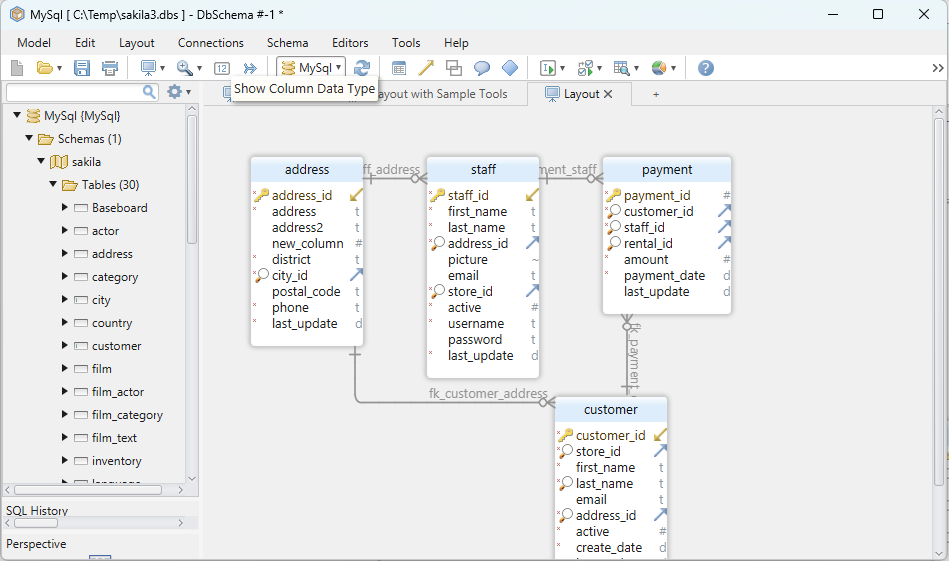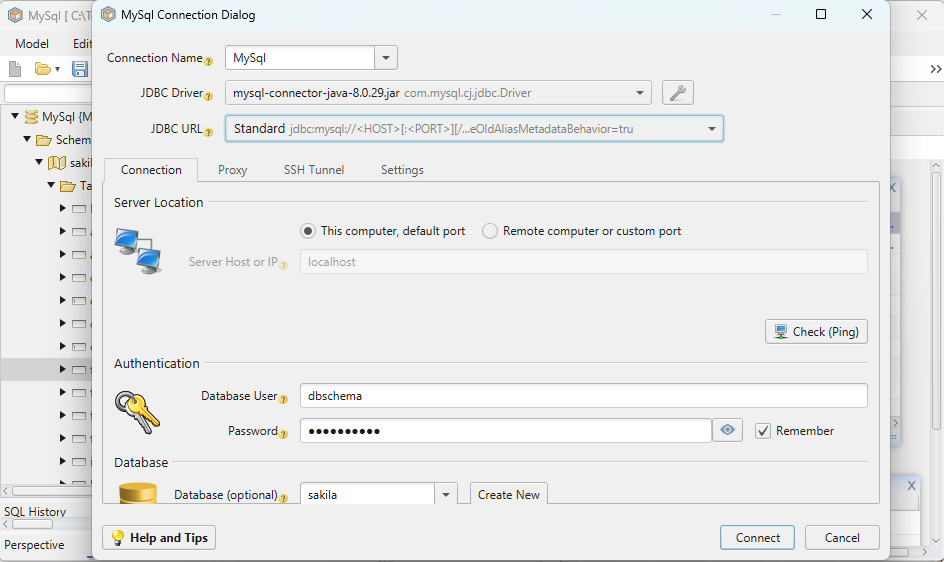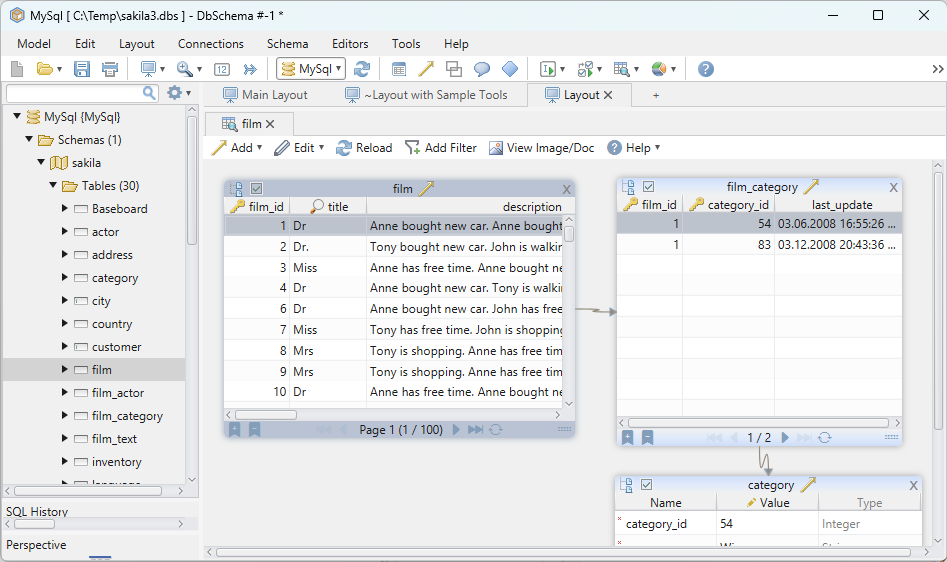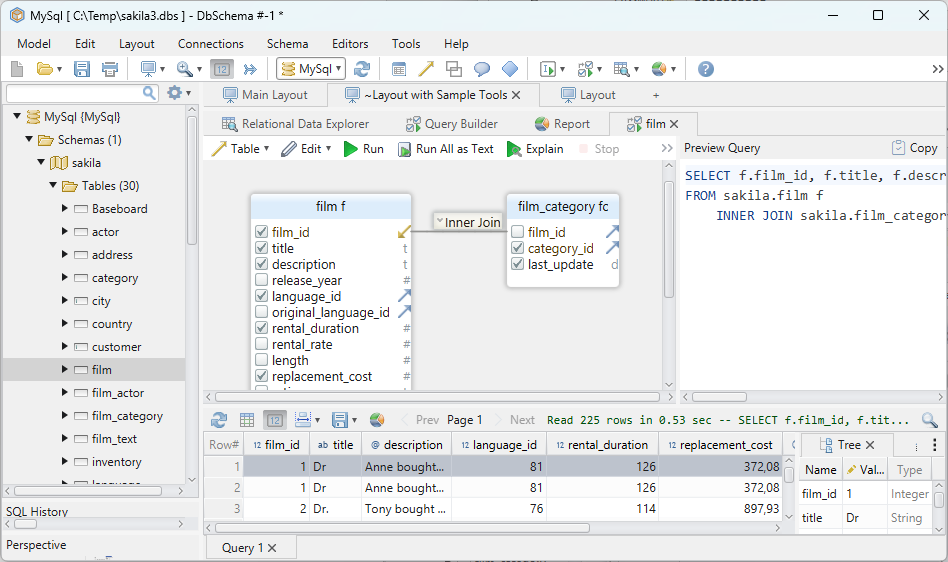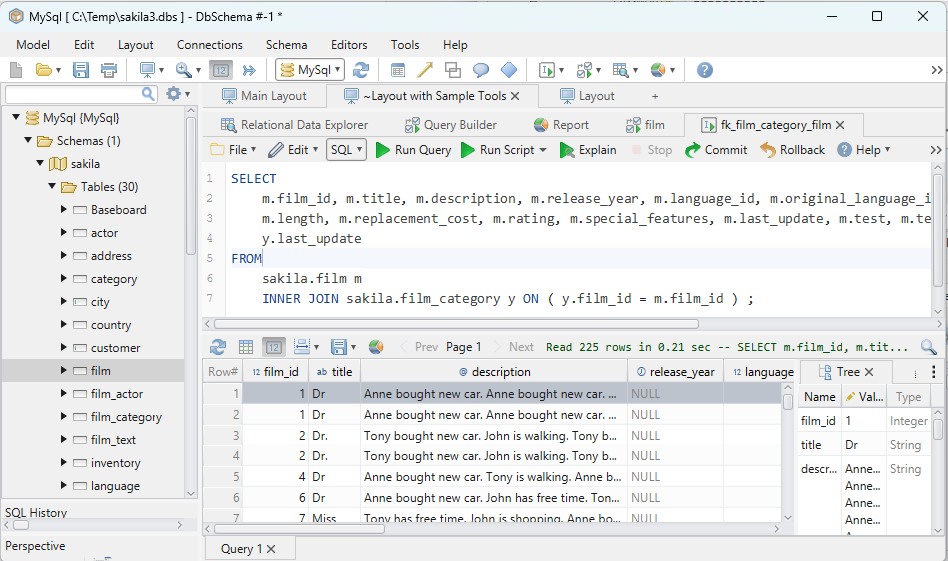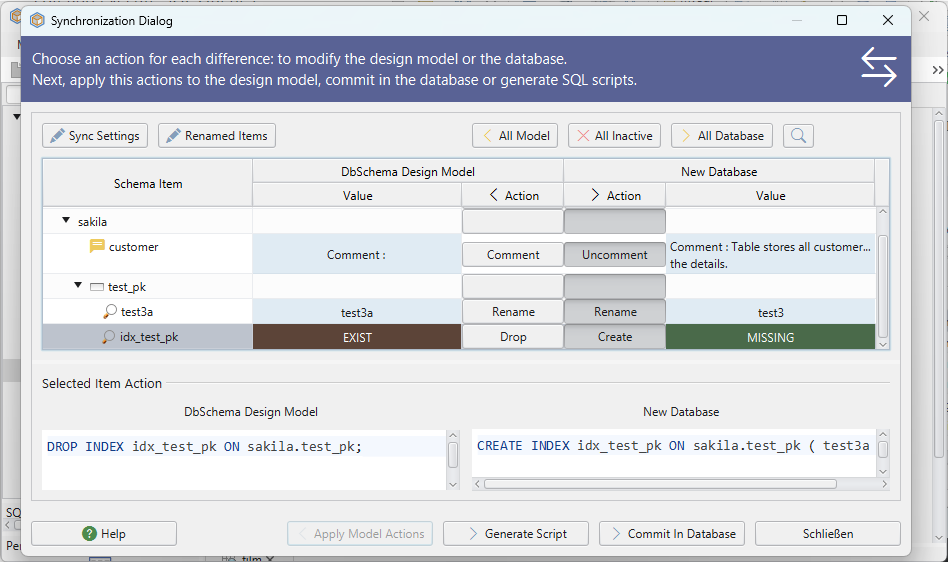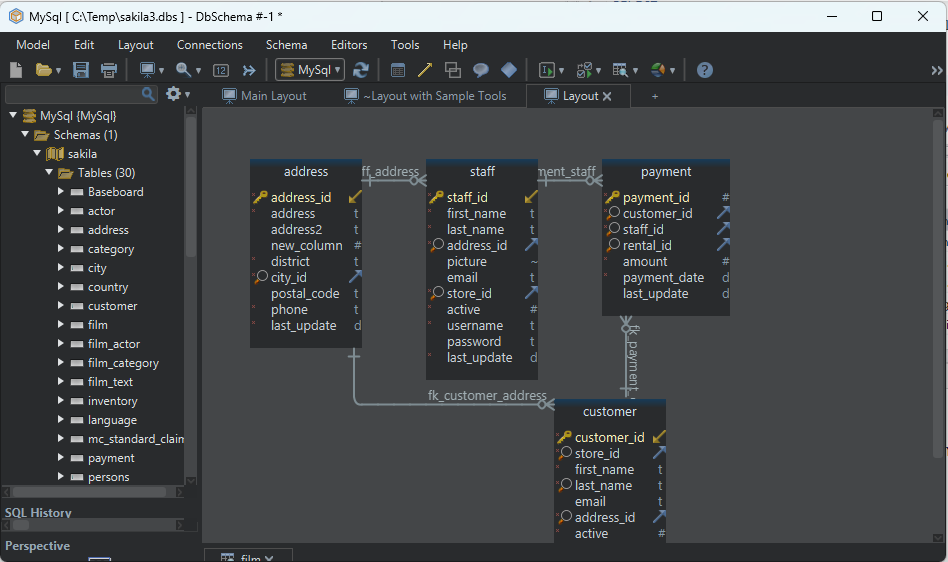
DbSchema Tutorial | SQL IN OPERATOR
SQL, or Structured Query Language, is a standard programming language specifically for managing data in relational databases. One of its powerful operators is the IN operator. This article will provide an in-depth look into the SQL IN operator, its uses, common mistakes, and more.
Introduction to SQL IN Operator
The IN operator is used in SQL to filter results based on a list of values. It allows you to specify multiple values in a WHERE clause, making your query more concise and readable.
Syntax:
SELECT column_name(s)
FROM table_name
WHERE column_name IN (value1, value2, ...);
Example:
Consider a sample table Students:
| ID | Name | Age | Grade |
|---|---|---|---|
| 1 | Alice | 23 | A |
| 2 | Bob | 25 | B |
| 3 | Charlie | 22 | A |
| 4 | David | 24 | C |
To select students with grades A or B:
SELECT Name
FROM Students
WHERE Grade IN ('A', 'B');
Result:
| Name |
|---|
| Alice |
| Bob |
| Charlie |
Explanation:
In this example, the query retrieves students who have grades A or B.
Difference between = and IN Operator
| Aspect | = Operator |
IN Operator |
|---|---|---|
| Values | Single | Multiple |
| Syntax | column = value |
column IN (value1, value2, ...) |
| Use Case | Comparing against one value | Comparing against a list of values |
Using IN with Strings
Strings can easily be used with the IN operator by enclosing them in single quotes.
Example:
To select students named Alice or David:
SELECT Name
FROM Students
WHERE Name IN ('Alice', 'David');
Result:
| Name |
|---|
| Alice |
| David |
Explanation:
Here, the query retrieves only the students named Alice and David.
Using IN with Numbers
The IN operator can also handle numerical values.
Example:
To select students with ID 1 or 4:
SELECT Name
FROM Students
WHERE ID IN (1, 4);
Result:
| Name |
|---|
| Alice |
| David |
Explanation:
This query fetches students whose IDs are either 1 or 4.
Using IN with Dates
For date values, ensure they are formatted correctly.
Example:
Consider a table Orders:
| OrderID | Product | OrderDate |
|---|---|---|
| 1 | Apple | 2023-01-10 |
| 2 | Banana | 2023-02-15 |
| 3 | Cherry | 2023-01-10 |
To select orders made on 2023-01-10:
SELECT Product
FROM Orders
WHERE OrderDate IN ('2023-01-10');
Result:
| Product |
|---|
| Apple |
| Cherry |
Explanation:
This query retrieves products ordered on 2023-01-10.
Using IN with Columns
You can compare columns using the IN operator.
Example:
To select students with the same age as Alice:
SELECT Name
FROM Students
WHERE Age IN (SELECT Age FROM Students WHERE Name = 'Alice');
Result:
| Name |
|---|
| Alice |
| Charlie |
Explanation:
Both Alice and Charlie share the same age.
Using IN with Subqueries
Subqueries can return a list of values for the IN operator.
Example:
To select students not in grade A:
SELECT Name
FROM Students
WHERE Grade NOT IN (SELECT Grade FROM Students WHERE Grade = 'A');
Result:
| Name |
|---|
| Bob |
| David |
Explanation:
This query retrieves students who aren’t in grade A.
NOT IN Operator
The NOT IN operator fetches rows that don’t match values in a list.
Example:
To select students not named Alice or David:
SELECT Name
FROM Students
WHERE Name NOT IN ('Alice', 'David');
Result:
| Name |
|---|
| Bob |
| Charlie |
Explanation:
Here, Bob and Charlie are the students not named Alice or David.
Applying IN in SELECT, UPDATE Statements
SELECT
We’ve seen the use of IN in the SELECT statement in previous examples.
UPDATE
You can use IN in the UPDATE statement to modify multiple rows.
Example:
To update grades of Alice and David to D:
UPDATE Students
SET Grade = 'D'
WHERE Name IN ('Alice', 'David');
Explanation:
After this, both Alice and David will have a grade of D.
Common Mistakes
- Forgetting the Parentheses: Always enclose values in parentheses.
- Mixing Data Types: Ensure consistent data types within the
INlist. - Overusing: For single value comparison, the
=operator is more readable.
Frequently Asked Questions
- Is
INcase-sensitive? - It depends on the database. Some databases are case-sensitive, while others aren’t. - Can
INbe used withJOIN? - Yes, you can combineJOINandINin a query. - Is there a limit to values in
IN? - Some databases may have a limit. However, excessively long lists can decrease performance.
Practice Questions
- Write a query to find products not sold on
2023-02-15. - Update student grades to
Ffor ages 23 and 25. - Fetch students with grades other than
AandB. - Retrieve orders placed on
2023-01-10and2023-02-15.
Conclusion
The SQL IN operator is a versatile and powerful tool in database querying, offering a concise way to filter results based on a list of values. Whether you’re working with strings, numbers, dates, or even subqueries, understanding the IN operator can significantly streamline your SQL workflows. This comprehensive guide aimed to provide a clear, detailed, and practical overview of its applications, ensuring that both beginners and experienced database enthusiasts can harness its full potential. As always, hands-on practice is the key to mastering any concept, so make use of the practice questions and real-world scenarios to refine your skills.
Happy data exploring!
